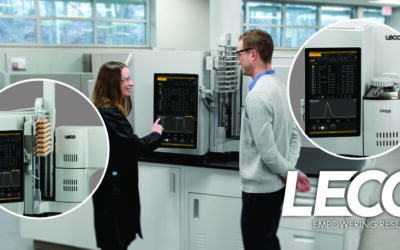In the pursuit of understanding biology at a molecular level, metabolomics stands as a cornerstone of systems biology. It reveals how organisms respond to genetic, environmental, and physiological changes through comprehensive profiling of small molecules. For decades, yeast (Saccharomyces cerevisiae) has served as a pivotal model organism—whether in winemaking, bioethanol production, or as a platform for industrial bioengineering. But to realize the full potential of metabolically engineered systems, researchers need precise, comprehensive, and highly accurate analytical tools to characterize the vast diversity of metabolites in complex biological matrices. That’s where LECO’s Pegasus® HRT 4D comes in—a transformative platform that fuses two-dimensional gas chromatography (GCxGC) with high-resolution time-of-flight mass spectrometry (HRTOF-MS). This powerful combination significantly enhances chromatographic resolution and spectral clarity, improving annotation confidence for researchers at the frontiers of metabolic discovery.
Profiling Metabolites from Yeast
In a study highlighted in LECO’s recent application note, researchers applied the Pegasus HRT 4D system to profile metabolites from yeast autolysate samples. Two yeast extracts were spiked with an internal standard mix comprised of deuterated and 13C-labeled representative compounds and underwent two-step derivatization via methoximation and sialylation before injection into the GC. The system was operated in both 1D and 2D GC modes with electron ionization (EI) and chemical ionization (CI), enabling precise compound annotation with sub-ppm mass accuracy. Peak finding and deconvolution with ChromaTOF® software found derivatized metabolites from many representative compound classes including acids, diacids, amino acids, sugars, bases, nucleosides, and nucleotides.

Representative compounds in yeast autolysate.
Key Findings
- Spectral Similarity Enhancement: GCxGC data acquisition significantly improved library match scores.

A comparison of spectral similarity scores obtained from GC versus GCxGC-HRT data acquisition of Baker’s Yeast Extract. The cleaner spectra resulting from GCxGC have a significant effect on library similarity scores.
- High Mass Accuracy: Molecular and fragment ions were identified with exceptional precision—mass errors averaging <1 ppm were observed for a suite of native and labeled amino acid spectra.
- Improved Peak Capacity and Clarity: The system’s High Resolution Deconvolution® (HRD®) technology enabled confident annotation of coeluting native and isotopically labeled metabolites, clearly distinguishing them in complex mixtures.

A) XIC B) Peak True Mass Spectrum for Native Tryptophan (3TMS) C) NIST Library Mass Spectrum—Tryptophan (3TMS)
The Ultimate Discovery Tool for Metabolomics Research
The platform’s robust performance stems from LECO’s ability to integrate fast acquisition speeds (up to 200 spectra/s in GCxGC mode), accurate mass detection, and intuitive data processing via ChromaTOF software—all within one streamlined workflow.
The Pegasus HRT 4D system empowers researchers with the resolution, precision, and ionization flexibility needed to confidently decipher the metabolic signatures of living systems. Whether you’re investigating disease biomarkers, studying the effects of genetic modifications, or optimizing fermentation processes, GCxGC separation and HRAM TOFMS provide a clear advantage in non-targeted metabolomics.
With instruments like the Pegasus GC-HRT 4D, metabolite discovery workflows are less daunting and significantly less time consuming. If you want to learn more about the Yeast Metabolite Characterization study, click the link to read our application note. For further learning on the Pegasus GC-HRT 4D and all of its capabilities in the realm of metabolomics, view our most recent webinar.




